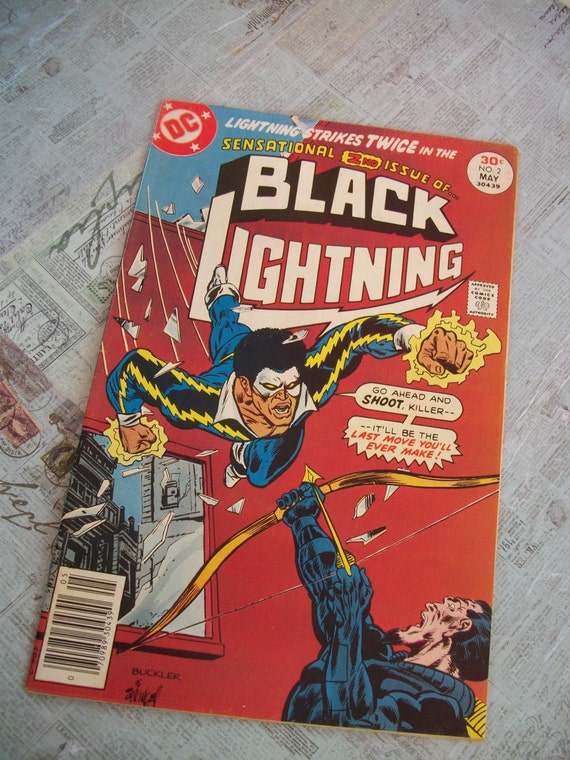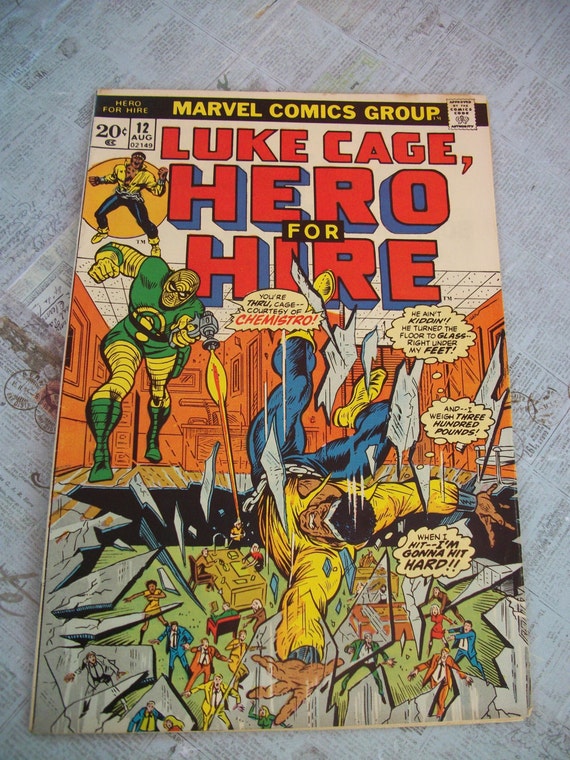
The 1970’s provided
mainstream comic book publishers with the opportunity to capitalize on the
popularity of the then newly created cinematic genre known as the
“Blaxploitation” film to introduce something new to its readers, the Black
Superhero.
While the Blaxploitation films of the 1970’s had their fair share of heroes(Shaft, Superfly, The Mack, Black Gunn, Black Caesar and Black Belt Jones) and heroines (Friday Foster, Coffy, Cleopatra Jones, Foxy Brown, Lady Cocoa and
Velvet Smooth), African American female lead characterization and voices in
comics of this era were all but silenced.
The new wave of African American
Super heroes included; Black Lightning, Black Goliath, Bumblebee, Brother Voodoo, Black Vulcan
and Luke Cage/Power Man. Written against the backdrop of civil unrest in the 1970s that began with Student Strikes at major US college campuses, infamous prison uprisings(Attica), the rise of the Black Panther Party, Watergate and the spread of Urban blight in major cities, the plot line for these heroes
typically portrayed the main character as being brought up in the Ghetto while
being subjected to high crime, corruption, inequality and poverty.
It is only after acquiring special Super Powers that the main characters can fight for justice in their own communities. Interesting metaphor based on the growth of black pride and the heightened desires for Black economic and political power after the turbulent Civil Rights struggles of the 1950's and 1960's.
Since the mainstream comic book publisher writers were (a) Male and (b) White, the vernacular and plot lines were
often affected by the era's stereotypical perception of African
Americans in the 1970s and tempered by chauvinist views of women.
Breaking the Superhero “Color Barrier” in the 1970s made way for increased inclusion in the 1980’s and
1990’s, leading to undoubtedly the most famous African-American superhero;
Spawn. Published by Image Comics and created by Todd McFarlane, the 1997 movie release of Spawn grossed a worldwide total close to 90 million at the Box Office.
 |
Black Lightning Vol 1, No. 2, May, 1977 |
Black Lightning (real name
Jefferson Pierce) is a fictional DC Comics superhero who debuted in
April 1977. The character was one of the first major African American
superheroes to appear in DC Comics, perhaps as the publisher tried to broaden
its consumer base and ride the last waves of the Blaxploitation film genre
popularity. Originally Black Lightning was a high school principal and
Olympic-level athlete turned vigilante whose focus was to take down organized
crime in Metropolis' Suicide Slum, fighting for
justice with his superhuman electricity-based power.
 |
Luke Cage Hero for Hire Vol 1, No. 12, August, 1973 |
Created in 1972, the
original Luke Cage was very much in the mold of the Blaxploitation films that
were at their height of popularity. His gaudy yellow costume and Harlem
upbringing made him stand out from the other Anglo American members of the
Marvel Universe. Cage was streetwise with a “Bad-Ass” attitude who didn't take "no mess"! Unlike
most heroes who fight crime based on principle of a higher moral playing field,
Cage needed to pay the bills! Thus, his “Hero for Hire” phase. Cage started a
private superhero agency in the ‘70s with a “take no prisoners” outlook. Later Luke began calling himself "Power Man" and began to associate with the team known as the "The Defenders".
No comments:
Post a Comment